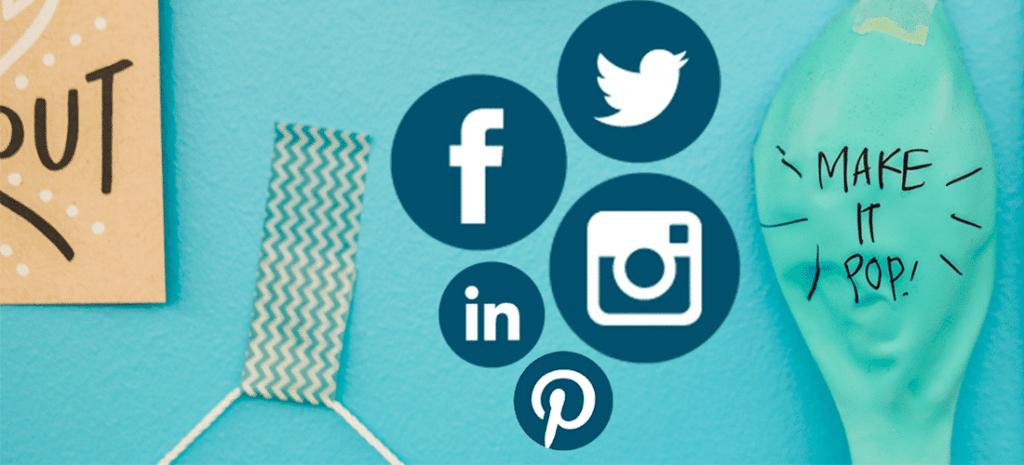
The Ultimate Social Media Checklist for Freelancers
I get it. Social media is a tough nut to crack. It takes a lot of time, care, and effort, too. And lest we forget, all that marketing work piles on top of the actual work you do for clients.
It’s overwhelming, I know.
Don’t you just wish there was a social media checklist made specifically for freelancers? A checklist that has actionable and repeatable steps you can do on the daily? A checklist that can help build yourself a following, and more importantly can help you get more clients?
Tough luck: there’s none.
And that’s exactly why I made this checklist—because I think it will help freelancers who are pulling all their hair out with no idea where to start. Here, I’ve laid out an easy-to-follow, actionable social media checklist for freelancers who want to use social media to get more clients.
In this article, I’ll cover:
- How to identify your target clients
- Discovering where to reach your audience
- Creating a collection of content
- Being social
- Closing the deal
Step 1: Lock-in your Target Clients
Whether you serve a specialized niche or a more generalist pool of clients, it’s paramount that you have a clear target demographic. Without one, you’ll be marketing aimlessly—and aimless marketing is a waste of time and money.
It’s an extra step but a crucial one. If you know exactly who you’re trying to reach, your decisions moving forward in this process are going to be more informed and ultimately more effective.

A good place to start is building a “follower persona.” Here’s my example:
“21–35 year-old C-level professionals from SaaS/B2B tech startups and digital marketing agencies that don’t have an in-house copywriter.”
The great thing about this is that you can’t get too specific.
These are just some target demographics for your persona:
- Age
- Gender
- Occupation
- Income level
- Educational level
- Type of industry
- # of employees
- Type of business
- Revenue
- …and more!
The more detail you bake into your follower persona, the better.
From my example, for instance, I know which tone to use in social, which types of content they will connect with, and most importantly, which social media platforms they already spend their time on.
Which brings me to…
Step 2: Finding where your Target Audience Hangs Out
There are more viable platforms than there are fingers on both my hands and feet, and that can often lead to choice paralysis. The cop-out move is to jump headfirst to staple platforms like Facebook, Twitter, and Instagram. That’s okay, but to save time and resources, I say carve out some time for deeper research and brainstorming as to where your target audience hangs out.

From my example, it’s easy to deduce that:
- these professionals use LinkedIn most often,
- as well as Facebook and LinkedIn groups that serve as think-tanks, and
- they could be hanging out on Twitter as well.
You can rehash this to suit your niche: Is your “follower persona” a designer? Instagram might be a good place to start. Are they a venture capitalist? Then you might want to check places like Angellist or Y Combinator. Are you looking for creative agencies to serve? A lot of them are on Dribbble or Behance—you should take a shot at these platforms.
By having a reference of the kind of person you’re targeting, you’ll easily identify which social platforms are worth pursuing and the types of content that will speak to your target audience.
Step 3: Filling a Well of Content to Share
Now that you have a good grasp of who your target audience is, it’s time to collect, curate, and create content.
A huge perk of taking social seriously is that it gives you the opportunity to poise yourself as an authority.
You do this by sharing relevant content to your serving niche. For me, those are pieces of content that show I know the work and that clients should hire me. Which makes the below tweet a really good example.
Keeping a bank of content like this will absolutely help your social game in terms of sharing content that are relevant to your services. I recommend using Google Sheets or Airtable (or even Trello) to manage all your posts.
Creating your Own Content
Create content that ties nicely to the service you offer. If you offer web design services, for example, writing an article or making a video on the web design process are sensible steps forward. Marketers similarly will benefit from posts that demonstrate their skills.
That’s a good rule of thumb to sink your teeth in: think of social media as an interactive portfolio. Push only the work you’re absolutely proud of to the fore.
Regardless if you’re writing an article or recording a video, make it packed with value. Enough so that your prospective readers or viewers will not only convert into followers but into leads as well.

Some key points to remember:
- Make your content relevant to your offered service.
- For videos, carve out a few seconds to invite your viewers to find you on your other social platforms.
- For articles, make sure you have easy-to-spot social media sharing icons. You can also use plugins like ClickToTweet if you’re using WordPress.
- Take advantage of all sorts of different medium to add to your article. That can be images, podcast episodes, presentation slides, videos, and more.
- Repurpose your best-performing content into different forms of content. Turn your most popular blog post and turn it into a video, then upload it to YouTube. You’d be amazed how effective content repurposing can be.
- Make sure you’re optimizing your media per platform, like using the best Instagram photo size for your work.
Curating Relevant Content from Others
There’s a lot of value to get from other people’s content, but tread lightly.
Much as you’d like to help your followers by feeding them with the best information, you’d want to educate them yourself. So don’t fill your social media posts with only content from other freelancers, blogs, or websites. The 80/20 rule applies well here. Make sure your content fills the bigger half of that equation.
Now that that’s out of the way, let’s curate.

My content curation of choice is Buffer, which has a content curation tool baked in. Feedly is great too, as well as Pocket and Pinterest. The idea here is that you should be able to cherry pick the most valuable posts and load them up in your queue.
Once you’ve selected all the posts to share, it’s time to make sure those posts will serve you the most, ultimately.
Keep these pointers in mind:
- When sharing the post, make sure to cite that it’s not your work, then…
- Add valuable insight in your caption when sharing it
- Reach out to the author of that content, and let them know that you love their work. Don’t hesitate plugging your own content and tell them you’d appreciate it if they considered posting your content on their social media as well. Win-win!
Collecting all Pieces of Content in One Place
So you now have content from both your own pool and others’. It’s time to keep them in one place so you don’t always scramble every time when it’s time to post.
The easiest (and cheapest) way to do this is by keeping them all in a Google Sheet. That worked for me for a good while, but if you want something more dynamic, you can look at more flexible workspaces like Trello and Notion. But consider Buffer (freemium) and Edgar (paid) as well; they are social media marketing tools with post schedulers baked in natively.
Committing to a Posting Schedule
Let me take a pause and congratulate you for making it here.
You did it.
You’re now ready to post.

Okay, but when should you post? Sadly, that’s entirely predicated on demographics, which vary for everyone.
There are (paid) third-party tools out there that use A.I. to determine which times of the day you should post your content, but I find that the following posting frequency works generally for everyone:
- Facebook: 1-2 posts per day
- Twitter: 15-30 tweets per day
- LinkedIn: 1 post per day
- Pinterest: 11-25 pins per day
- Instagram: 1-3 posts per day
As for the scheduling itself, that’s something you can sort out along the process. But if you want to use some of the paid tools I’ve mentioned, there’s Buffer, CoSchedule, Sprout, and Edgar.
Step 4: Being Social
You have the content part nailed down. Good. Here comes what seems to be the hard part to a lot of people—being social.
The point of this step is to warm up leads that are already in your network, and nurture ones you’ve already made contact with.
Sounds simple, right? Well, it is. Staying on top of it can grow a bit overwhelming, but not if you have a properly laid out checklist, which is what I have for you below.
- Follow prospects and other freelancers when the opportunity arises.
- Post at least one (1) picture every day about your life as a freelancer.
- Post at least one (1) behind-the-scenes moment on your Instagram stories.
- Do a feed/stories takeover with a fellow freelancer.
- Ask freelancer friends on Instagram to appear on each other’s accounts.
- Use relevant hashtags.
- Comment on prospects and fellow freelancers’ posts and stories.
- Update your “Highlights” stories once every two weeks.
- Consider advertising on Facebook’s Ad platform.
- Comment on relevant group discussions in Facebook Groups.
- Add prospects and other freelancers as friends when the opportunity arises.
- Post at least one (1) blog post every day on your profile and Facebook Page (if you have one; you should!).
- Post at least one (1) blog post every week in relevant groups.
- Ask friends/fans to change their feed settings to see your posts first. They can change it by clicking the “Following” button and changing it to “See First.”
- Comment on prospects and fellow freelancers’ status updates, posts, and videos.
- Snap behind-the-scenes moments of your freelancing and post them to your profile or page.
- Post an abundant number of tweets every day.
- Make sure the tweets are relevant to the clients you’re trying to serve.
- Let your personality shine.
- Retweet relevant posts from influencers and followers.
- Follow an abundant number of new people every week.
- Respond to mentions and DMs every day.
- Make pins for your top performing blog posts, and then post them to Pinterest, linking to your article.
- You can easily make pins using free web software like Canva.
- Create boards based around specific aspects of your services. In my case, that would be “Content Creation Resources” or “Copywriting Tips.”
- Add your pins to your boards whenever you post a new blog post.
- Add new pins to your boards at least once a week.
- Find a considerable number of relevant pins from others and repin them to your boards.
- Comment on relevant group discussions in LinkedIn Groups.
- In the discussions, connect with prospects and other freelancers when the opportunity arises.
- Post at least one (1) blog post every week on your profile.
- Post at least one (1) blog post every week in relevant groups.
- Comment on prospects and fellow freelancers’ status updates, posts, and videos.
- Share behind-the-scenes moments of your freelancing.
Slideshare
- Repurpose your top performing blog posts as presentations and post them on Slideshare.
- Update your Slideshare at least twice a month.
YouTube
- Create videos that showcases your expertise as a freelancer. Or make videos that address prospects’ most frequently asked questions.
- Upload videos on your committed upload schedule.
- Ask subscribers to hit the “bell” icon next to the Subscribe button. This will notify them whenever you upload new videos.
- Link to your blog and other social platforms at the beginning of your video description.
- Subscribe to new channels in your industry.
- Comment on relevant videos.
Step 5: Sleeve up for the Close

This checklist should give you some direction as to where to take your social game as a freelancer! The end goal, of course, is to build your professional brand, gain authority, and book more (or better) clients.
But don’t forget to have fun with the process! You’ll meet some incredibly talented people, so make the connection worthwhile. Nurture the relationships you build through social by being genuinely helpful to them.
And when you make that connection, don’t waste time! Offer your services to followers who might have the need for them. It will feel more fulfilling to help people you’ve already built relationships with.
Good luck!












